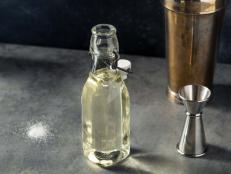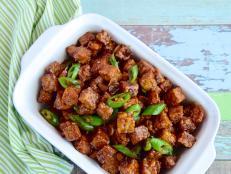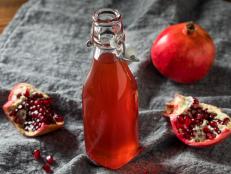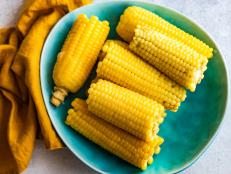What Is Sucralose?
It’s hiding in many packaged foods, but is it bad for you?

Alexandra Grablewski/Getty Images
By Sheela Prakash for Food Network Kitchen
Sheela is a cookbook author, recipe developer, food and wine writer and registered dietician.
Sucralose (also known as Splenda) is a zero-calorie artificial sweetener that is made from real sugar and is used as a sugar substitute.
You’ll find it everywhere: in little packets at cafés and restaurants to sweeten your coffee and in grocery stores to take home and bake a cake with. There’s a lot to uncover about sucralose, however. How is it made and is it bad for you or dangerous for your health? Here’s everything you need to know about this sugar alternative.
What Is Sucralose?
Sucralose is a zero-calorie artificial sweetener that is used as a sugar replacement. It is sold under the brand name Splenda. The sugar substitute is made by chemically changing the molecules that make up sucrose, which we all know as regular table sugar. This alteration prevents sucralose from being digested and used for energy, which is why it does not provide any calories. Instead, it is simply excreted through the body.
One important thing to note is sucralose is 600 times sweeter than regular table sugar. That means you only need a small amount to produce the equivalent sweetness of sugar. So, to make Splenda a one-to-one sugar substitute, maltodextrin or dextrose, both white, starchy powders, is added as a filler to provide volume and texture.
What Is Sucralose In?
Sucralose, branded as Splenda, is readily available on grocery store shelves. It is heat-stable, which means it can be dissolved in hot drinks like coffee and tea and can also replace sugar in baked goods. Since it’s an approved ingredient in the United States and beyond, you might also find it in packaged desserts, breads, prepared meals, beverages, yogurt, ice cream, toothpaste, and even chewing gum.

taka4332/Getty Images
Is Sucralose Bad For You?
The United States Food and Drug Administration approved sucralose for use in 15 food categories in 1998 and for use as a general purpose sweetener in 1999. It was put through over 110 safety studies before the FDA approved its use.
While sucralose is generally deemed safe for consumption, there are a few known sucralose side effects. These include:
- Sucralose and gut health: Some studies have shown that sucralose can reduce the number of good bacteria and increase inflammation in your microbiome, also known as your gut or gastrointestinal tract. These studies have only been done on rodents, however, so more research is needed to fully understand sucralose’s effect on the gut health of humans.
- Sucralose and weight: While sucralose is a zero-calorie sweetener, it might not actually help you lose weight. Studies have found little to no correlation between replacing sugar with sucralose and weight loss. In addition, some other studies have discovered that diet sodas sweetened with sucralose may actually stimulate appetite, causing you to potentially consume more calories.
- Sucralose and diabetes: For the most part, sucralose has been thought to be especially useful for those who suffer from diabetes, who must be careful with their sugar consumption. Research shows that it doesn’t raise blood glucose levels, which is important to keep in check for those with diabetes. However, there has been at least one study that has shown that sucralose may in fact affect blood glucose negatively in certain individuals. More research needs to be done to determine sucalose’s true effect on those with diabetes.
Sucralose vs. Aspartame
Sucralose is a zero-calorie alternative sweetener, while aspartame is a low-calorie alternative sweetener. Aspartame is a sugar substitute sold under the brand name Equal. It contains 4 calories per gram and is 200 times sweeter than regular table sugar. Like Splenda, it is mixed with fillers to reduce its sweetness. However, unlike Splenda, it isn’t a one-to-one substitute for sugar. 1/2 teaspoon of Equal is equivalent to 1 tablespoon of sugar.
Sucralose vs. Stevia
Sucralose is considered an artificial sweetener, while stevia is considered a natural sweetener. This is because stevia is made from the leaves of the stevia plant. Both, however, are zero calorie, unlike aspartame. Brand names of stevia include Truvia and Stevia in the Raw, which are also blended with fillers because stevia is 100 to 300 times sweetener than sugar. One filler in particular that’s used in Truvia is erythritol, which research has recently shown to be linked to cardiovascular risks. Other brands, however, such as Stevia in the Raw, mix stevia with dextrose.
Related Links:































































